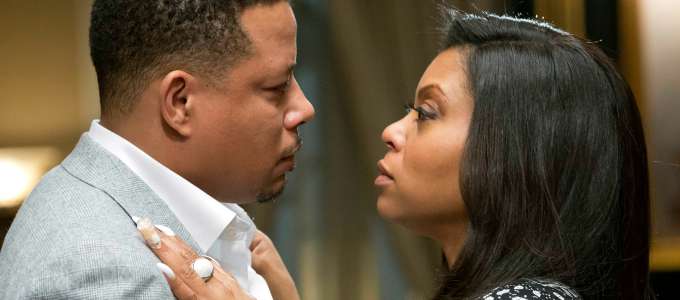Terrence Howard and Taraji P. Henson star in Fox's "Empire." (Photo by Fox)
Viola Davis has been all over the news this week. She broke yet another barrier when she won her first Emmy for lead actress in a drama series, the first ever to be awarded to a black woman.
It was also a hot week for TV premieres, namely “Black-ish” and “Empire.” I’ve never watched the former, but I’m an avid fan of the second. Not only did I watch its season two debut with interest, but also I read with equal interest the various critiques that came about after it aired.
One critique I read essentially called “Empire” shallow, chastising it for making light of issues around race and diversity and praising “Black-ish” for making a more nuanced and — dare I use the word — deep showing of black life.
But here’s the thing. There is no one way to show black life, no one right or wrong way to express the nuanced and varied facets that make up any minority experience — good or bad.
Shonda Rhimes may have said it best in a recent Q&A in Elle magazine: “There is this weird belief from people on the outside and from people in black communities that there is only one way to be black. And I say it in the writers’ room all the time: My Black Is Not Your Black. What’s terrifying is that, just the same way we’ve all accepted that normal is white, everybody seems to buy into the idea that there’s only one way to be black or one way to be Hispanic. That’s as damaging as anything else.”
One of the main things that stands in the way of true inclusion and acceptance, of widespread use of a multifaceted lens through which to view those in society who are not white or male, is the idea that black, Hispanic, female or gay is or should be any one, single thing.
That’s beyond damaging. It’s borderline criminal.
It’s like saying that every black man walking around is a violent criminal. Or that every Hispanic person you see is Mexican and cuts grass for a living. Or that every white male of a certain age thinks like Donald Trump …
We have to learn how to see people as people — not races, not genders, not exclusively. I’m not just a black woman who writes about diversity. I’m also an editor who runs a learning brand. I’m a novelist. I’m an aunt, a sister and a daughter. I’m Kellye Whitney, and that means something more than my sex and my race because I’m a multilayered person.
At the risk of sounding all kumbaya, all people have multiple layers and sides. Those change because people change and evolve, and no one or two descriptors will ever tell one person’s complete story.
As leaders we have to keep that in mind when we lead in the workplace, and we have to help spread that message to promote not just a diverse but also an inclusive workforce.















